
Rahul Rao
Rahul Rao is a graduate of New York University's SHERP and a freelance science writer, regularly covering physics, space, and infrastructure. His work has appeared in Gizmodo, Popular Science, Inverse, IEEE Spectrum, and Continuum. He enjoys riding trains for fun, and he has seen every surviving episode of Doctor Who. He holds a masters degree in science writing from New York University's Science, Health and Environmental Reporting Program (SHERP) and earned a bachelors degree from Vanderbilt University, where he studied English and physics.
Latest articles by Rahul Rao

Astronauts on the moon could stay fit by running in a Wheel of Death
By Rahul Rao published
Scientists suggest lunar astronauts can stay fit by running sideways within a Wheel of Death.
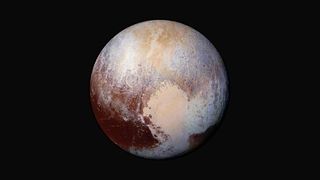
Pluto's heart-shaped scar may offer clues to the frozen world's history
By Rahul Rao published
How Pluto's Sputnik Planitia formed remains unknown, but researchers have imagined a body about the size of Switzerland crashing into Pluto at a shallow angle.

NASA's Curiosity Mars rover begins exploring possible dried-up Red Planet river
By Rahul Rao published
NASA's Curiosity rover is now exploring a possible ancient river on Mars named Gediz Vallis.

NASA's Parker Solar Probe makes 1st-of-its-kind observation within a coronal mass ejection
By Rahul Rao published
NASA's Parker Solar Probe looked into a coronal mass ejection coming from the sun for the first time, detecting some turbulence that has intrigued scientists.

Self-docking spacecraft could be built with AI system similar to ChatGPT
By Rahul Rao published
Scientists have invented a program that allows spacecraft to dock autonomously. It's still in testing phases, but the next step may be to try it out in orbit.

NASA taps Nikon cameras to help Artemis astronauts photograph the moon
By Rahul Rao published
NASA wants Artemis moon astronauts to have the perfect moon camera — Nikon is on the case.
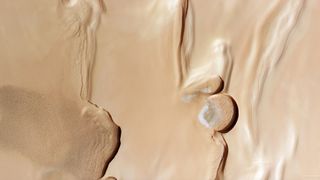
Rippling sand dunes, icy cliffs spied near Mars' north pole (photos)
By Rahul Rao published
Newly released photos by Europe's Mars Express orbiter shows the Red Planet's exotic north polar region, where sand dunes meet high, icy cliffs.

The Milky Way's enormous, star-studded 'Radcliffe Wave' is literally waving
By Rahul Rao published
Scientists studied the Radcliffe Wave, a giant star-studded structure not far from our sun, to see that it is indeed "waving."
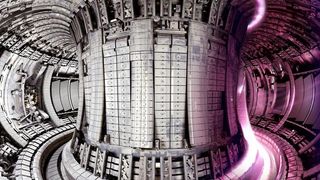
Nuclear fusion lab sets record for most energy created with single reaction
By Rahul Rao published
Scientists with the JET facility have broken a record for the most amount of raw energy created via nuclear fusion. There's still work to be done, though.

Jupiter's volcanic moon Io looks outstanding in these close flyby photos from NASA's Juno probe
By Rahul Rao published
During its second close rendezvous with Jupiter's volcanic moon, NASA's Juno spacecraft collected some amazing images of the scene.

Our shrinking moon could cause moonquakes near Artemis astronauts' landing site, scientists warn
By Rahul Rao published
As Artemis 3 nears its 2026 launch date, geologists worry about whether moonquakes and lunar landslides will impact landing.

Earth's water might have come from ancient space rocks, meteorite discovery suggests
By Rahul Rao published
Scientists have found fingerprints of water in ancient meteorites reminiscent of the planetesimals that formed Earth.

12 times scientists penetrated the secrets of asteroids in 2023
By Rahul Rao published
The OSIRIS-REx sampling mission, a planetary defense prototype named DART and a spacecraft's ambitious journey to a metal world are just some of the highlights

This light-bending tech will let scientists see the sun like never before
By Rahul Rao published
Two upcoming solar missions will be armed with "photon sieves." Here's what that means.

Nuking an incoming asteroid will spew out X-rays. This new model shows what happens
By Rahul Rao published
After a NASA mission redirected an asteroid moonlet with a planned crash in 2022, a new model is building on that effort to show how a nuclear weapon could smash a space rock to pieces.

Space weather will drag NASA's NEOWISE asteroid-hunting probe back to Earth in 2025
By Rahul Rao published
After more than a decade of hunting for asteroids and comets, the days of NASA's NEOWISE mission are officially numbered, thanks to our increasingly active sun.

The moon has been altered by human activity. Are we in a 'Lunar Anthropocene?'
By Rahul Rao published
Mirroring the Earth's Anthropocene, which describes the age in which humans altered our planet, scientists argue moon advancements place us in a Lunar Anthropocene.

Signs of life shooting from Saturn's moon Enceladus would be detectable by spacecraft, scientists say
By Rahul Rao published
Scientists believe possible amino acids in Enceladus' subsurface ocean can indeed be detected by spacecraft.

Scientists are devising ways to gaze past Earth's radio haze
By Rahul Rao published
Radio signals in Earth's orbit can create noise in astronomy data. Scientists are planning a workaround that'll be available to researchers for free.

NASA's Psyche spacecraft just fired a laser 10 million miles away in deep space
By Rahul Rao published
The Psyche spacecraft just fired a laser on its way to a metal asteroiod, in a test that could help speed up science transmissions across the solar system.
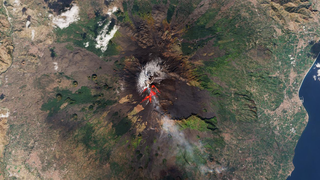
Satellites watch lava flows of Italy's Mount Etna volcano eruption (image)
By Rahul Rao published
Sicily's Mount Etna volcano erupted on Nov. 12, and ESA satellites caught the event in infrared.

Dark matter-hunting satellite ARRAKIHS to launch in 2030. Here's how it will work
By Rahul Rao published
The European Space Agency is slated to launch a satellite in 2030 that's meant to probe the nature of dark matter.

Artemis moon astronauts will need oxygen. NASA wants to extract it from lunar dust
By Rahul Rao published
NASA wants to figure out how future moon-dwellers can produce, capture and store breathable oxygen from lunar soil.
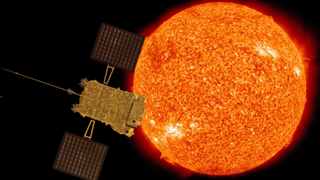
India's Aditya-L1 sun probe spots 1st high-energy solar flare
By Rahul Rao published
India's newly launched Aditya-L1 sun-studying mission has already captured its first glimpse of a solar flare in high-energy X-rays.

Jupiter's Great Red Spot turns blue in new ultraviolet view from Hubble Telescope (photo)
By Rahul Rao published
The Hubble Space Telescope recently snapped an ultraviolet image of the gas giant Jupiter, offering a stunning false-color look at the planet's turbulent atmosphere.
Get the Space.com Newsletter
Breaking space news, the latest updates on rocket launches, skywatching events and more!